-
 Bitcoin
Bitcoin $119000
0.17% -
 Ethereum
Ethereum $3664
-2.12% -
 XRP
XRP $3.229
-7.77% -
 Tether USDt
Tether USDt $1.001
0.02% -
 BNB
BNB $783.2
-1.48% -
 Solana
Solana $191.3
-5.26% -
 USDC
USDC $1.000
0.03% -
 Dogecoin
Dogecoin $0.2450
-7.74% -
 TRON
TRON $0.3115
-1.61% -
 Cardano
Cardano $0.8229
-6.80% -
 Hyperliquid
Hyperliquid $44.17
-2.93% -
 Stellar
Stellar $0.4343
-7.23% -
 Sui
Sui $3.792
-4.09% -
 Chainlink
Chainlink $18.38
-5.73% -
 Hedera
Hedera $0.2491
-7.79% -
 Bitcoin Cash
Bitcoin Cash $518.1
-1.51% -
 Avalanche
Avalanche $24.13
-5.84% -
 Litecoin
Litecoin $113.9
-5.41% -
 UNUS SED LEO
UNUS SED LEO $8.974
-0.21% -
 Shiba Inu
Shiba Inu $0.00001400
-7.98% -
 Toncoin
Toncoin $3.215
-2.09% -
 Ethena USDe
Ethena USDe $1.001
0.03% -
 Polkadot
Polkadot $4.178
-6.84% -
 Uniswap
Uniswap $10.38
-3.05% -
 Monero
Monero $317.8
-1.85% -
 Bitget Token
Bitget Token $4.733
-1.94% -
 Pepe
Pepe $0.00001293
-8.20% -
 Dai
Dai $1.000
0.02% -
 Aave
Aave $292.8
-4.74% -
 Bittensor
Bittensor $430.1
-3.67%
How has the semiconductor shortage affected the mining hardware market?
The global semiconductor shortage caused delays in ASIC and GPU production, leading to skyrocketing prices and long wait times for cryptocurrency mining hardware.
Jul 13, 2025 at 04:15 pm
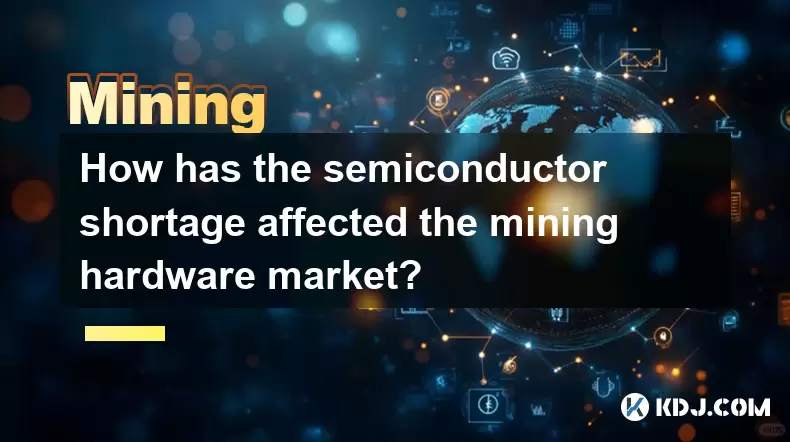
Overview of the Semiconductor Shortage in the Tech Industry
The global semiconductor shortage, which began in 2020 and extended into 2021 and beyond, has had far-reaching effects across various industries. The semiconductor industry is a critical component in manufacturing everything from consumer electronics to automotive systems. When the pandemic disrupted supply chains and increased demand for electronic devices surged, manufacturers struggled to keep up with production demands. This imbalance between supply and demand has significantly impacted sectors that rely heavily on chips, including the cryptocurrency mining hardware market.
Impact on Cryptocurrency Mining Hardware Availability
Cryptocurrency mining relies on specialized hardware such as ASICs (Application-Specific Integrated Circuits) and GPUs (Graphics Processing Units). Both of these require advanced semiconductors to function efficiently. As the semiconductor shortage worsened, companies like Bitmain, Canaan, and NVIDIA faced challenges in producing sufficient quantities of mining equipment. As a result:
- Lead times for mining rigs increased dramatically, often stretching beyond six months.
- Retail prices for new mining hardware skyrocketed, sometimes doubling or tripling due to scarcity.
- Second-hand markets became more active, but at inflated prices and varying quality levels.
These conditions have made it increasingly difficult for both individual miners and large-scale operations to acquire new mining gear at reasonable costs.
Effect on GPU Mining Equipment Production
GPU-based mining, especially for cryptocurrencies like Ethereum, was particularly affected by the semiconductor shortage. GPUs are not only used for mining but also for gaming and professional computing tasks. With global demand outpacing supply:
- Manufacturers prioritized general-purpose computing and gaming markets over cryptocurrency-specific applications.
- NVIDIA introduced hash rate limiters on some RTX 30-series cards, attempting to deter miners and preserve stock for gamers.
- AMD Radeon graphics cards saw similar constraints, with limited availability and inflated pricing across major markets.
Miners were forced to either wait extended periods for hardware or pay premium prices on secondary markets where available inventory was scarce and inconsistent in performance.
Consequences for ASIC Miner Manufacturing
ASIC miners, designed specifically for mining algorithms like SHA-256 (used by Bitcoin), were also impacted. Companies producing these machines faced delays in acquiring the necessary chips for building efficient mining rigs. Key outcomes included:
- Bitmain Antminer S19 series models experienced significant shipping delays, affecting planned mining farm expansions.
- Smaller ASIC manufacturers were unable to secure enough chip supplies to remain competitive.
- Production bottlenecks led to rationing of mining equipment, with priority given to institutional buyers rather than retail customers.
This constrained environment made scaling mining operations increasingly difficult, especially for smaller players who couldn’t afford long lead times or high upfront costs.
Market Responses and Workarounds by Miners
Faced with limited access to new mining hardware, miners adopted several strategies to cope with the shortage:
- Some turned to refurbished or older generation mining rigs, despite lower efficiency and higher power consumption.
- Others explored cloud mining services or mining pool participation to bypass direct hardware acquisition issues.
- A number of miners engaged in hardware swapping or trading, exchanging less profitable miners for more efficient ones when possible.
Despite these efforts, the lack of consistent and affordable access to new mining hardware remained a persistent challenge throughout the semiconductor shortage period.
Long-Term Adjustments in the Mining Hardware Supply Chain
In response to ongoing semiconductor constraints, mining hardware manufacturers and suppliers began adjusting their strategies:
- Some companies diversified their chip sourcing strategies, working with multiple semiconductor foundries to reduce dependency on single suppliers.
- Others invested in custom-designed chips aimed at improving efficiency while reducing reliance on mainstream silicon providers.
- Inventory management practices evolved, with increased emphasis on securing long-term chip contracts and forecasting production needs more accurately.
These adaptations helped mitigate some of the worst effects of the semiconductor shortage, though full recovery in terms of hardware availability took time and continued coordination between chipmakers and mining equipment producers.
Frequently Asked Questions
Q: How did the semiconductor shortage affect Bitcoin mining specifically?
A: The shortage caused delays in ASIC miner production, leading to longer delivery times and increased costs for Bitcoin miners. This impacted both individual hobbyists and large mining farms trying to scale operations.
Q: Were all types of mining hardware equally affected by the semiconductor shortage?
A: No. While both ASICs and GPUs were affected, GPUs experienced more volatility due to dual-use demand from gaming and professional markets. ASICs were impacted mainly through production bottlenecks and reduced output capacity.
Q: Did the semiconductor shortage lead to any changes in mining profitability calculations?
A: Yes. With rising hardware costs and longer wait times, many miners recalculated their ROI timelines. Higher upfront investment combined with fluctuating cryptocurrency prices made profitability projections more complex and uncertain.
Q: How did miners adapt when they couldn't get new hardware?
A: Many miners resorted to using older or refurbished equipment, participated in cloud mining, or joined mining pools to maintain operations without purchasing new rigs directly.
Disclaimer:info@kdj.com
The information provided is not trading advice. kdj.com does not assume any responsibility for any investments made based on the information provided in this article. Cryptocurrencies are highly volatile and it is highly recommended that you invest with caution after thorough research!
If you believe that the content used on this website infringes your copyright, please contact us immediately (info@kdj.com) and we will delete it promptly.
- XRP, Solana, and Institutional Adoption: A New Era for Crypto?
- 2025-07-24 11:10:12
- Dogecoin, Remittix, and Crypto Protocols: The Evolution of Digital Finance
- 2025-07-24 10:50:12
- BlockDAG, Hedera, and Stellar: Charting the Course for Crypto's Future
- 2025-07-24 10:50:12
- BlockDAG's No-Vesting Edge: Can It Outpace Cardano's Price?
- 2025-07-24 11:10:12
- South Korea's Credit Card Industry Embraces Stablecoin Regulations: A New Era?
- 2025-07-24 10:30:12
- Bitcoin, SHIB, and Institutional Momentum: Decoding Crypto's 2025 Trajectory
- 2025-07-24 11:15:12
Related knowledge
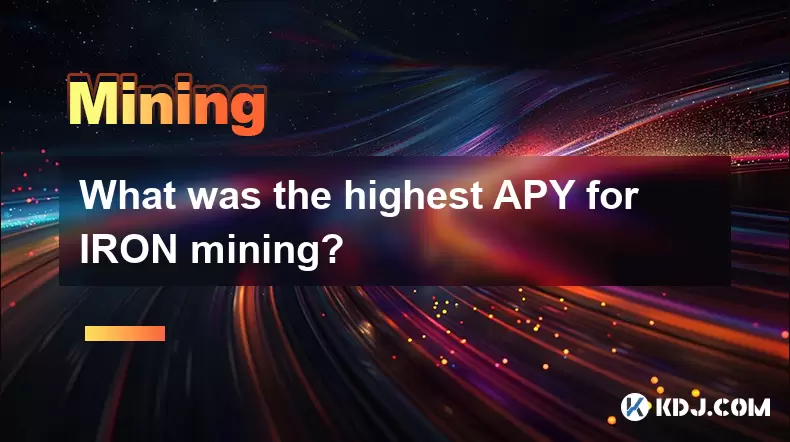
What was the highest APY for IRON mining?
Jul 23,2025 at 05:14am
Understanding IRON Token and Its Mining MechanismThe IRON token is a stablecoin that operates within the Iron Finance ecosystem, primarily on blockcha...

What is impermanent loss in IRON pools?
Jul 23,2025 at 09:00am
Understanding Impermanent Loss in the Context of IRON PoolsImpermanent loss is a phenomenon that affects liquidity providers in decentralized finance ...

How to claim rewards from IRON mining?
Jul 23,2025 at 02:21pm
Understanding IRON Mining and Reward MechanismsIRON Finance operated as a decentralized finance (DeFi) protocol on the Polygon and Binance Smart Chain...
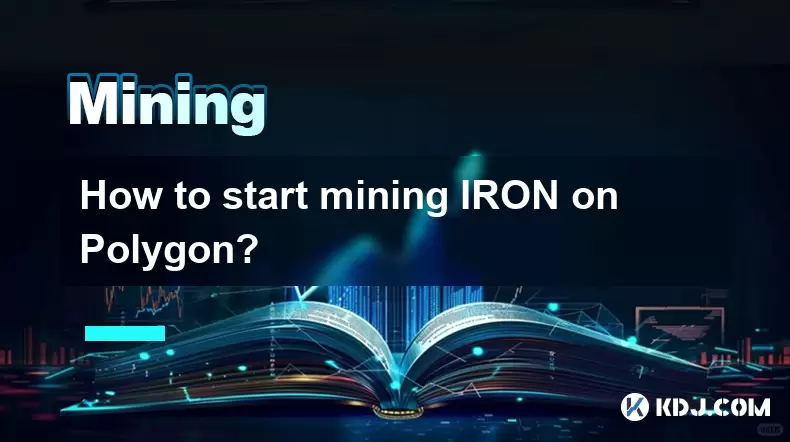
How to start mining IRON on Polygon?
Jul 23,2025 at 08:00pm
Understanding IRON and Its Role on PolygonIRON is a decentralized, algorithmic stablecoin designed to maintain a 1:1 peg with the US dollar. It operat...
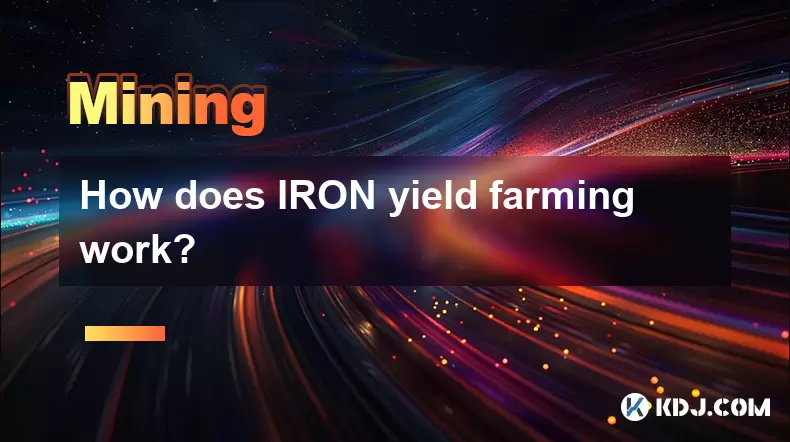
How does IRON yield farming work?
Jul 23,2025 at 10:14pm
Understanding IRON Yield Farming and Its Core MechanismIRON yield farming is a decentralized finance (DeFi) strategy that allows users to earn rewards...
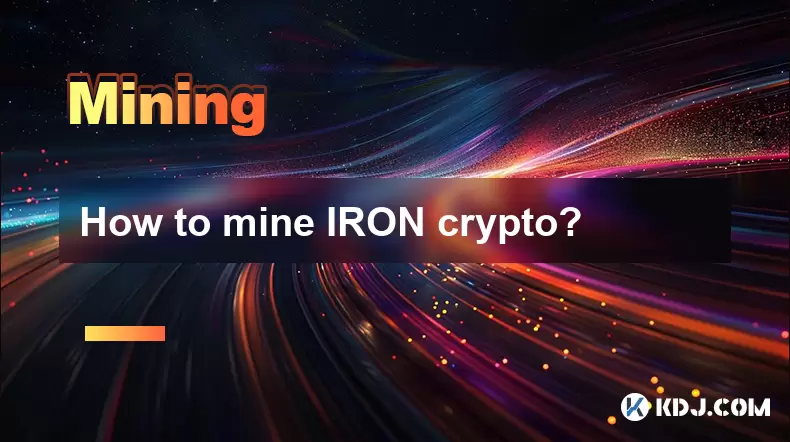
How to mine IRON crypto?
Jul 23,2025 at 07:08pm
Understanding IRON Crypto and Its Mining MechanismIRON crypto is not a standalone blockchain-based cryptocurrency that can be mined using traditional ...

What was the highest APY for IRON mining?
Jul 23,2025 at 05:14am
Understanding IRON Token and Its Mining MechanismThe IRON token is a stablecoin that operates within the Iron Finance ecosystem, primarily on blockcha...

What is impermanent loss in IRON pools?
Jul 23,2025 at 09:00am
Understanding Impermanent Loss in the Context of IRON PoolsImpermanent loss is a phenomenon that affects liquidity providers in decentralized finance ...

How to claim rewards from IRON mining?
Jul 23,2025 at 02:21pm
Understanding IRON Mining and Reward MechanismsIRON Finance operated as a decentralized finance (DeFi) protocol on the Polygon and Binance Smart Chain...

How to start mining IRON on Polygon?
Jul 23,2025 at 08:00pm
Understanding IRON and Its Role on PolygonIRON is a decentralized, algorithmic stablecoin designed to maintain a 1:1 peg with the US dollar. It operat...

How does IRON yield farming work?
Jul 23,2025 at 10:14pm
Understanding IRON Yield Farming and Its Core MechanismIRON yield farming is a decentralized finance (DeFi) strategy that allows users to earn rewards...

How to mine IRON crypto?
Jul 23,2025 at 07:08pm
Understanding IRON Crypto and Its Mining MechanismIRON crypto is not a standalone blockchain-based cryptocurrency that can be mined using traditional ...
See all articles

























































































